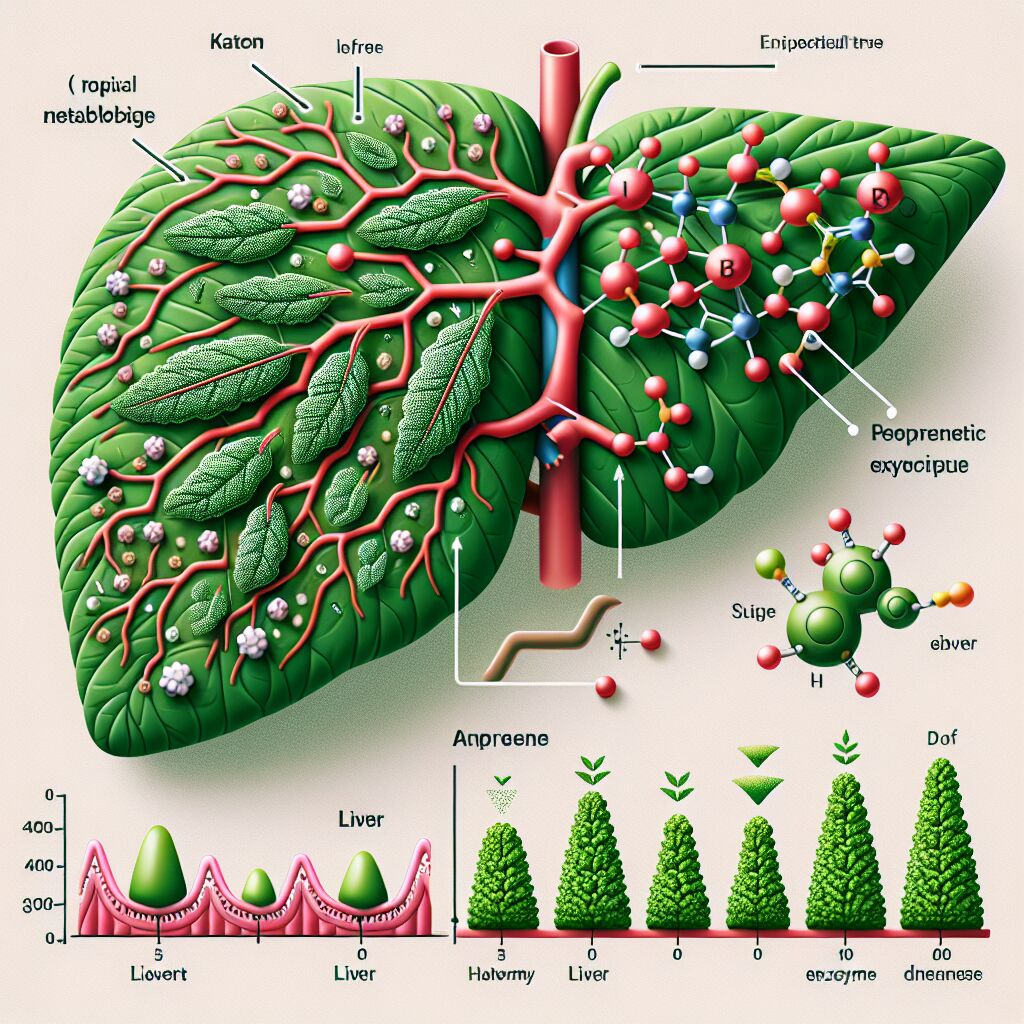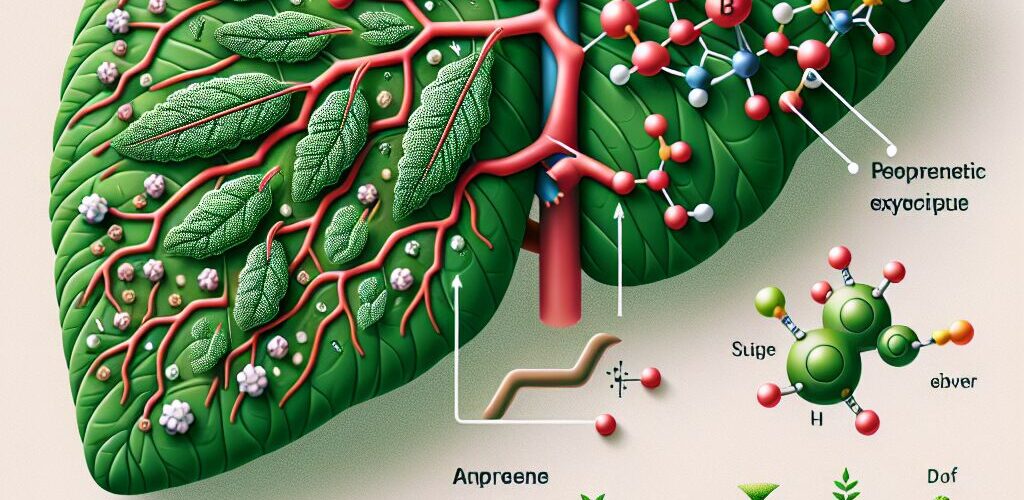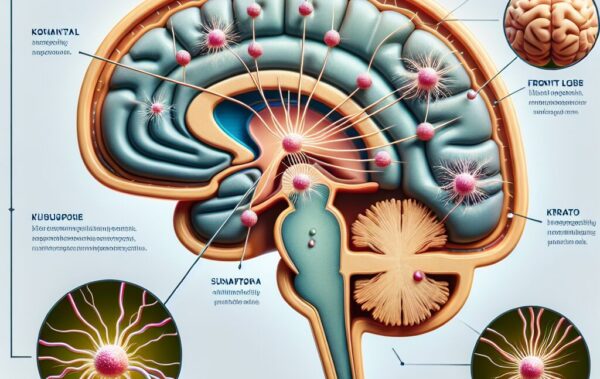.container {max-width: 1200px;}
- Kratom’s active compounds: an overview
- Liver metabolism of kratom: biochemical pathways
- Enzymatic interactions: cytochrome P450 and beyond
- Evidence from clinical and preclinical studies
- Safety concerns and regulatory outlook
Kratom, scientifically known as Mitragyna speciosa, is a tropical tree indigenous to Southeast Asia, particularly Thailand, Malaysia, Indonesia, and Papua New Guinea. The leaves of this plant have been traditionally used for their stimulant and analgesic properties. The primary active compounds found in kratom are mitragynine and 7-hydroxymitragynine, both of which belong to the alkaloid family.
These alkaloids interact with various receptors in the brain, mainly the opioid receptors, which explains their effectiveness in pain management and mood modulation. Mitragynine is the most abundant alkaloid in kratom, constituting about 66% of the total alkaloid content. Its pharmacological effects are diverse, including analgesic, antitussive, and anti-inflammatory properties. On the other hand, 7-hydroxymitragynine, although present in smaller quantities, is considerably more potent in its activity.
Beyond mitragynine and 7-hydroxymitragynine, kratom leaves contain over 40 other bioactive compounds, which include alkaloids such as speciogynine, paynantheine, and speciociliatine. Each of these contributes to the herb’s complex pharmacological profile, influencing its overall effects on the human body.
Understanding the specific influence of these compounds on liver metabolism and enzymes is crucial. The liver is the body’s primary site for drug metabolism, and it employs a series of enzymes to convert substances into more water-soluble forms for excretion.
For those interested in exploring various kratom forms, our kratom powder category offers a wide selection, including popular strains like Maeng Da and Bali. Additionally, if convenience is your priority, consider browsing the kratom capsules category for easy-to-take options.
Researchers have started to delve deeper into understanding how kratom’s active compounds interact with liver enzymes, specifically the cytochrome P450 enzyme system. This enzyme system is pivotal in metabolizing various compounds, including pharmaceuticals and foreign substances. Determining how kratom influences these enzymes can provide insight into potential therapeutic uses and risk profiles.
In summary, while the primary alkaloids—mitragynine and 7-hydroxymitragynine—dominate the conversation around kratom’s effects, the presence of numerous other compounds cannot be ignored. Each of these contributes to the herb’s unique pharmacological footprint, all of which play a role in how kratom influences liver metabolism and enzyme activity.
Liver metabolism of kratom: biochemical pathways
Kratom’s interaction with the liver begins at the biochemical level, where its active compounds are metabolized through various pathways. The liver is an essential organ in metabolizing a wide range of substances, including alkaloids like mitragynine and 7-hydroxymitragynine. When kratom enters the body, its compounds are absorbed into the bloodstream and transported to the liver. Here, hepatic enzymes break down these alkaloids into different metabolites, which can have varying degrees of bioactivity.
The metabolic fate of kratom in the liver predominantly involves the cytochrome P450 enzyme system, which is a crucial player in drug metabolism. This enzyme family consists of multiple isoenzymes, each responsible for different biochemical transformations. For instance, mitragynine is primarily metabolized by liver enzymes such as CYP3A4, CYP2D6, and CYP2C9. These enzymes convert mitragynine into its more water-soluble forms to be readily excreted in the urine.
Interestingly, 7-hydroxymitragynine undergoes a similar metabolic pathway but is known for being more potent due to its higher affinity for the opioid receptors. This increased potency can influence the liver’s metabolic load, potentially leading to distinctive effects on enzyme activity and overall liver function. Researchers have been extensively studying these interactions to understand how long-term kratom use might affect liver health.
Moreover, kratom contains additional alkaloids such as speciogynine, paynantheine, and speciociliatine, which are also metabolized in the liver. Each of these compounds may interact differently with the enzyme pathways, thereby influencing the overall metabolic profile of kratom consumption. The cumulative effect of these metabolites can either enhance or mitigate the pharmacological impacts of the primary alkaloids, making the study of liver metabolism of kratom a complex yet fascinating field.
Understanding these biochemical pathways is essential for interpreting the hepatotoxic risks associated with kratom. It has been observed that in some individuals, heavy or prolonged use of kratom may lead to elevated liver enzyme levels, indicating hepatocellular injury or stress. These findings have led to increased scrutiny and regulatory interest in kratom products.
For those who prefer more refined forms of kratom, the market offers various alternatives, such as kratom liquid extracts, which provide concentrated doses potentially affecting the liver differently compared to traditional kratom powders. Additionally, consumers can explore kratom capsules, which offer a convenient and precise dosage that might mitigate overconsumption risks.
The ongoing research into how kratom influences liver metabolism and enzyme function is vital. Not only does it help in understanding the potential therapeutic benefits, but it also sheds light on safety considerations. As researchers uncover more about these biochemical pathways, consumers gain better insights into how to responsibly enjoy the benefits of kratom products without compromising liver health.
Enzymatic interactions: cytochrome P450 and beyond
Cytochrome P450 enzymes are essential for the metabolism of a vast range of endogenous and exogenous compounds. Kratom’s active alkaloids, particularly mitragynine and 7-hydroxymitragynine, interact significantly with this enzyme system. The CYP450 family consists of multiple isoenzymes, with CYP3A4, CYP2D6, and CYP2C9 playing crucial roles in the metabolism of kratom’s alkaloid components.
The enzyme CYP3A4 is responsible for the oxidative metabolism of mitragynine, which converts it into various metabolites. These metabolites are more water-soluble forms that the body can easily excrete. Interestingly, this same enzyme also processes several medications, leading to potential drug interactions. For instance, if a person uses kratom along with pharmaceuticals metabolized by CYP3A4, there might be an alteration in the effectiveness of the drugs due to competitive inhibition or induction. This interaction underscores the importance of cautious kratom consumption, especially for individuals on medication.
Continuing beyond CYP3A4, enzymes like CYP2D6 and CYP2C9 also metabolize kratom’s alkaloids, although to a lesser extent. These enzymes work symbiotically to break down the compounds, ensuring kratom’s metabolites are efficiently processed and expelled. The presence of multiple interacting pathways highlights the complex nature of kratom metabolism within the liver.
7-Hydroxymitragynine, another critical alkaloid in kratom, follows a similar metabolic pathway but with noted differences. Its higher potency, due to greater affinity for opioid receptors, could lead to distinctive effects on enzyme activity and liver function. The higher potency means a smaller quantity of 7-hydroxymitragynine is needed to achieve significant effects, potentially altering the metabolic load on the liver compared to mitragynine.
This enzyme interaction dynamic does not stop with just these two alkaloids. Kratom contains several other alkaloids, such as speciogynine, paynantheine, and speciociliatine. Each alkaloid exhibits unique properties and interactions with the CYP450 enzyme system, collectively influencing the overall metabolic profile of kratom. The cumulative effect of these multiple metabolites significantly impacts liver enzyme activity, potentially enhancing or mitigating the pharmacological effects and risks of kratom consumption.
For example, consumers interested in trying different forms of kratom might explore options in our Green Vein Kratom Powder category or Kratom Liquid Extracts. Each form may have varying implications on liver metabolism due to differences in concentration and bioavailability.
The understanding of these enzymatic interactions has practical implications, not only for kratom consumers but also for healthcare providers who need to be aware of potential drug interactions and metabolic considerations. The inhibition or induction of CYP450 enzymes by kratom can lead to significant variations in drug efficacy and safety. For instance, kratom’s influence on CYP3A4 can affect the metabolism of drugs like statins or antihypertensives, potentially leading to adverse effects or reduced therapeutic outcomes.
As the research on kratom’s interactions with liver enzymes continues, it becomes increasingly crucial to consider safety guidelines. Being aware of these interactions helps consumers make informed choices and use kratom responsibly. Understanding the liver’s role in metabolizing kratom and other substances paves the way for safer consumption practices, minimizing potential health risks and enhancing the benefits of this traditional herb.
| Cytochrome P450 Enzyme | Kratom Alkaloid Interaction |
|---|---|
| CYP3A4 | Mitragynine, 7-Hydroxymitragynine |
| CYP2D6 | Mitragynine |
| CYP2C9 | Mitragynine |
| Other Alkaloids | Speciogynine, Paynantheine, Speciociliatine |
The intricate enzyme interactions among kratom’s alkaloids necessitate further studies to fully elucidate their implications on liver metabolism. This knowledge is vital for optimizing kratom use, ensuring safety, and understanding its contribution to both therapeutic applications and risk factors.
Evidence from clinical and preclinical studies
 Research into the influence of kratom on liver metabolism and its enzymatic interactions has gained momentum in recent years. Clinical and preclinical studies provide valuable insights into the potential benefits and risks associated with kratom use. These studies often focus on how kratom’s alkaloids, particularly mitragynine and 7-hydroxymitragynine, interact with the liver’s enzyme systems, including cytochrome P450 enzymes, to understand their complex metabolic pathways.
Research into the influence of kratom on liver metabolism and its enzymatic interactions has gained momentum in recent years. Clinical and preclinical studies provide valuable insights into the potential benefits and risks associated with kratom use. These studies often focus on how kratom’s alkaloids, particularly mitragynine and 7-hydroxymitragynine, interact with the liver’s enzyme systems, including cytochrome P450 enzymes, to understand their complex metabolic pathways.
Preclinical studies, which primarily involve animal models, have been pivotal in elucidating the metabolic pathways of kratom. These studies reveal that mitragynine is the chief alkaloid metabolized by liver enzymes such as CYP3A4, CYP2D6, and CYP2C9. The metabolites produced during this process are more water-soluble, aiding in their excretion. These findings suggest that kratom’s influence on liver metabolism could vary significantly depending on the concentration and form of kratom consumed.
For instance, a study conducted on rodents demonstrated that high doses of kratom extracts could lead to elevated liver enzyme levels, indicating hepatocellular stress or injury. This discovery has raised safety concerns, urging further exploration into the dosage and long-term effects of kratom consumption. Interestingly, this interaction with liver enzymes can also influence how other medications are metabolized, necessitating caution for users prescribed drugs metabolized by the same enzymes.
Clinical studies involving human subjects provide a more comprehensive understanding, especially concerning kratom’s real-world implications. A small-scale clinical trial showed that regular kratom users had elevated levels of liver enzymes compared to non-users. Yet, these levels remained within the upper limits of normal ranges for most participants, suggesting that kratom’s hepatotoxicity might be dose-dependent and varies among individuals.
Another clinical aspect worth mentioning is kratom’s potential therapeutic benefits. Some clinical observations have indicated that kratom can mitigate symptoms of opioid withdrawal by interacting with opioid receptors, which could offer a less harmful alternative to conventional opioid therapy. However, the hepatic implications of such use need thorough examination to balance benefits against potential liver risks. Users interested in exploring kratom’s therapeutic applications can find diverse options like the popular Maeng Da Kratom Powder, known for its potent effects.
Despite limited large-scale human trials, anecdotal evidence and smaller studies have shed light on the efficacy and safety of various kratom products. Products such as Hibiscus Red Vein Maeng Da Kratom Tea Bags and Kratom Liquid Extracts are preferred by some users for their unique profiles and ease of consumption.
Moreover, it is essential to consider the potential for variability in kratom quality and composition given the lack of standardized production and regulation. Studies have found that the concentration of key alkaloids like mitragynine can vary widely among different kratom products, potentially altering their impact on liver metabolism and overall safety.
While the data from clinical and preclinical studies highlight significant findings, further research is needed to fully understand the long-term effects of kratom on liver health. This knowledge can inform consumers and healthcare providers about safe usage practices, ensuring that kratom’s benefits do not overshadow its risks. The ongoing scrutiny is a step towards better regulatory frameworks and more informed decisions by consumers, particularly those relying on kratom for its purported therapeutic benefits.
Safety concerns and regulatory outlook
The discussion surrounding kratom’s safety profile and regulatory status is multi-faceted, reflecting its growing popularity and contested acceptance in various parts of the world. Safety concerns primarily stem from the potential hepatotoxic effects of kratom on the liver, as observed in some users.
Reports have emerged documenting cases of liver injury associated with kratom use. These cases often describe elevated liver enzyme levels, presenting symptoms like jaundice, fatigue, and dark urine. While such symptoms normalize after discontinuing kratom, these cases have raised alarms about the herb’s safety, especially with long-term or high-dose usage. Regulatory bodies including the FDA have issued warnings acknowledging these potential risks, although more comprehensive, longitudinal studies are needed to draw conclusive evidence.
Given these concerns, monitoring kratom’s quality and composition remains crucial. The lack of standardized production means the alkaloid concentrations in kratom can vary widely, impacting its effects on liver metabolism and enzyme activity. This variability can lead to inconsistent experiences and unpredictable health outcomes, making third-party testing and quality assurance paramount for consumers seeking reliable kratom products.
Regulatory efforts to address these safety concerns have varied globally. In countries like Thailand and Indonesia, where kratom has traditional value, it remains legal under specific regulations. Conversely, in nations like the United States, kratom occupies a gray area—legal at the federal level yet banned in several states. The DEA previously attempted to classify kratom as a Schedule I substance, indicating no accepted medical use and high abuse potential. However, public outcry and insufficient scientific evidence thwarted this move, prompting a call for more nuanced research to inform future regulatory actions.
Consumers looking to minimize risks while enjoying kratom should adhere to some precautionary measures:
- Purchase kratom from reputable sources that provide transparency regarding alkaloid content and quality controls, such as trusted kratom marketplaces.
- Consider alternative formats like kratom liquid extracts or capsules for standardized dosing.
- Avoid combining kratom with other substances, particularly pharmaceuticals metabolized by the same liver enzymes, unless supervised by a healthcare provider.
From a regulatory perspective, establishing a balanced approach that both respects traditional usage and prioritizes consumer safety is key. This might involve setting rigorous standards for product testing, providing clear consumer guidelines, and fostering open channels for reporting adverse effects.
Additionally, the push for more rigorous scientific research continues. Only through comprehensive studies can the community achieve a holistic understanding of how kratom’s interactions with liver enzymes impact overall health. The ultimate goal is to provide enough evidence to guide safer use practices and regulatory measures, ensuring that kratom’s benefits can be harnessed responsibly and effectively.









